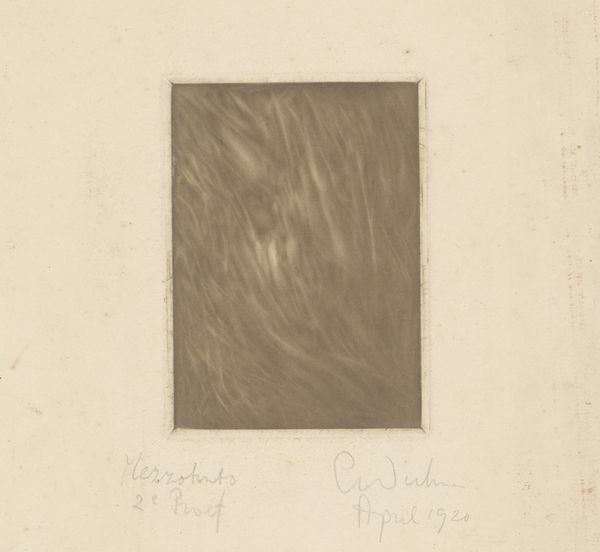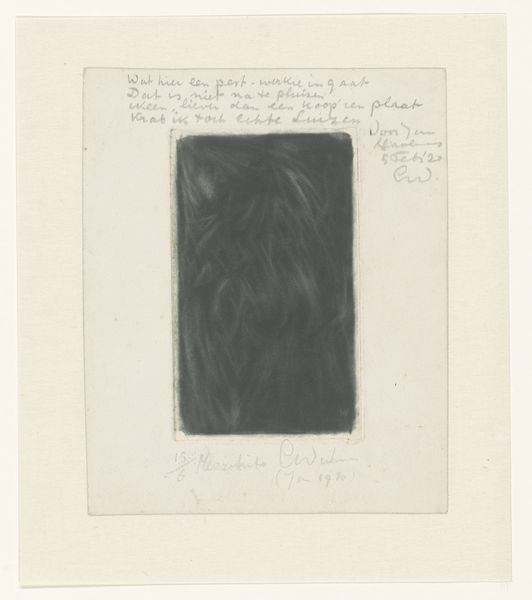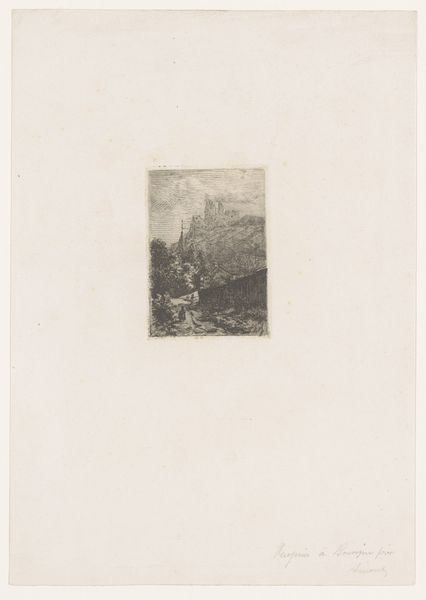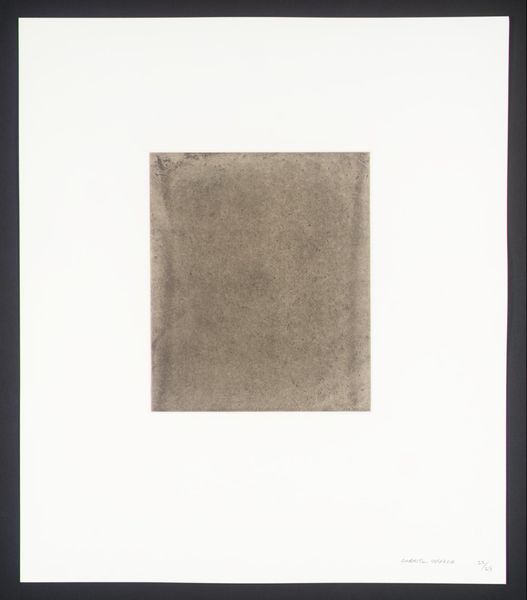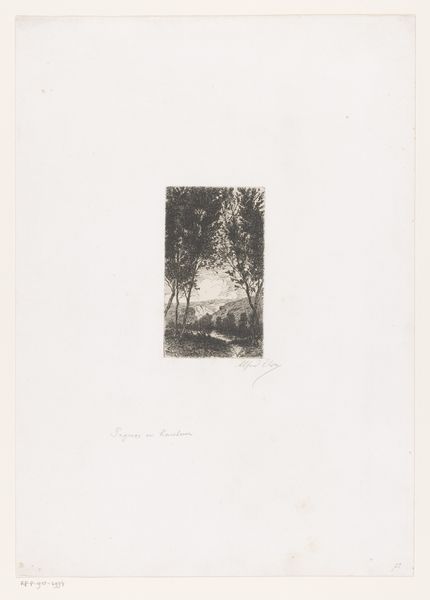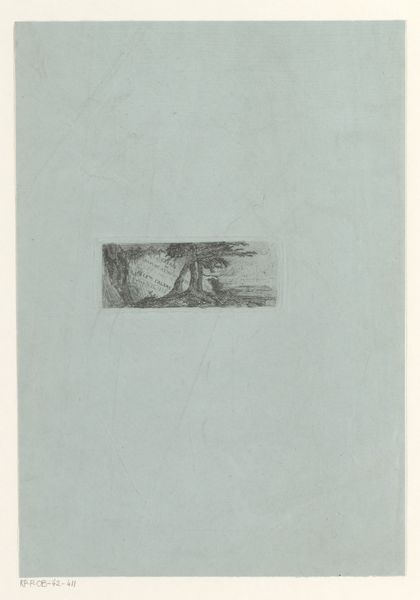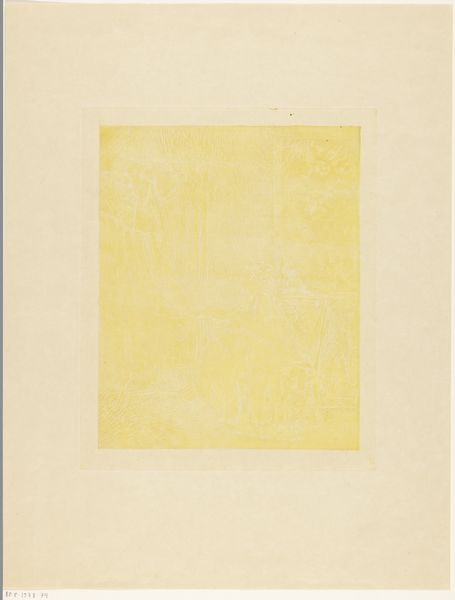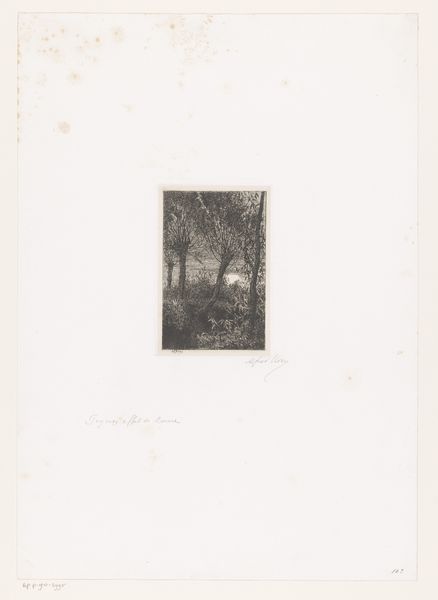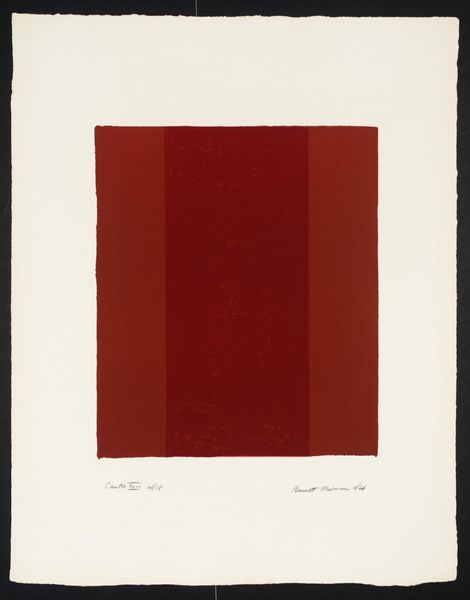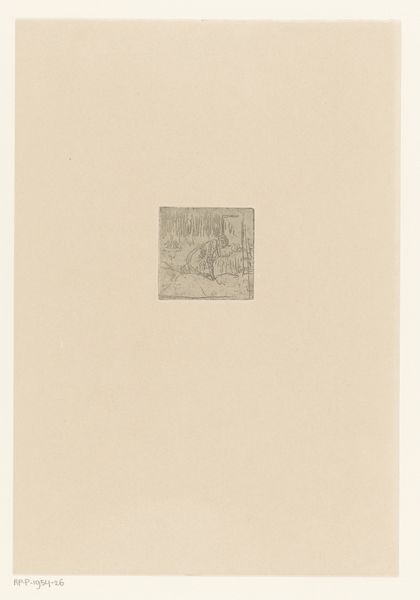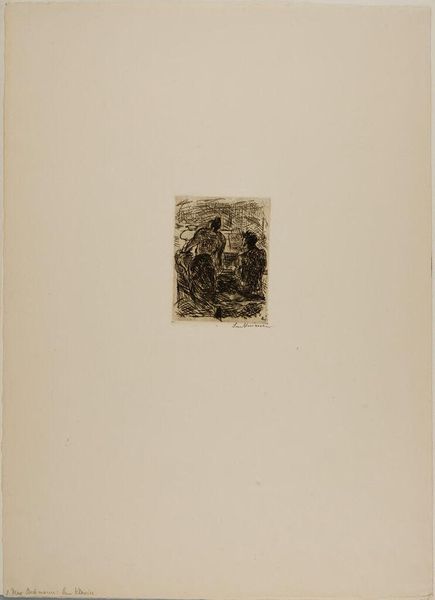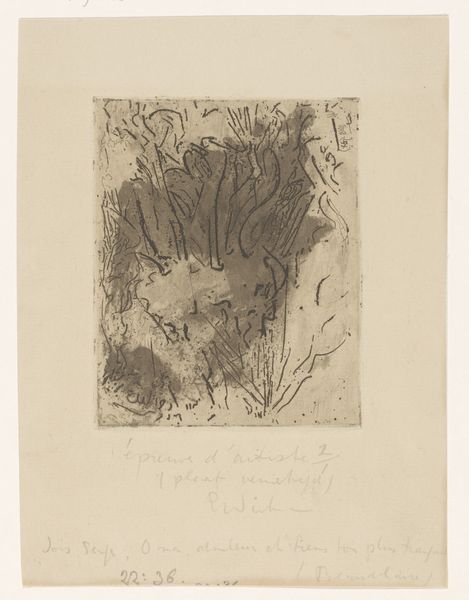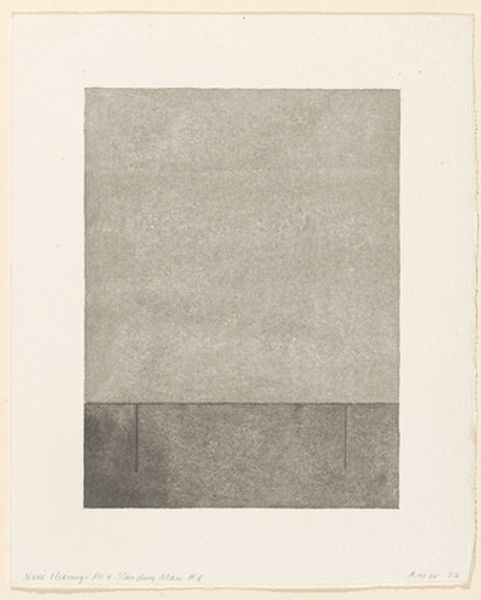
drawing, paper, graphite
#
drawing
#
paper
#
graphite
#
modernism
Dimensions: height 87 mm, width 70 mm
Copyright: Rijks Museum: Open Domain
Editor: We're looking at Erich Wichmann's "Abstracte Compositie," a graphite drawing on paper created between 1920 and 1924. It's a small square of dark, swirling lines set against a larger rectangular field of blank space, evoking for me something primal and unresolved. What do you see in this piece? Curator: That dark square pulses with an energy contained, a symbol reminiscent of the alchemical nigredo – the blackening, the stage of decomposition necessary for transformation. What resonates within those swirling graphite lines? Do you feel a sense of turmoil? Editor: Definitely turmoil, or at least something turbulent. It almost feels like a storm cloud condensed into a geometrical form. So, the “blackening” - how would that connect to post-war modernism in the 1920s? Curator: Following the devastation of the First World War, artists like Wichmann were grappling with a world irrevocably changed. This 'blackening' wasn't just personal; it reflected a collective societal trauma, a dismantling of old certainties to allow space for the new, for radical reimagining. Do you notice how the rigid border around the central turmoil perhaps symbolizes an attempt to contain that collective grief and societal upheaval? Editor: That makes sense. The formal boundary does create a kind of tension. So it’s like containing chaos, acknowledging but trying to control something terrible? Curator: Precisely! Think about the historical memory it evokes, how potent symbols such as color and shape can channel complex collective trauma across generations. The controlled yet expressive mark-making within this drawing invites us to consider our own ways of responding to deep historical events. Editor: Wow, I wouldn't have picked up on that depth without your insights into its symbolism. Curator: It’s fascinating how even simple geometric abstractions can hold layers of cultural memory, isn’t it? The challenge and beauty of art is always in what it holds, rather than just what we see.
Comments
No comments
Be the first to comment and join the conversation on the ultimate creative platform.
